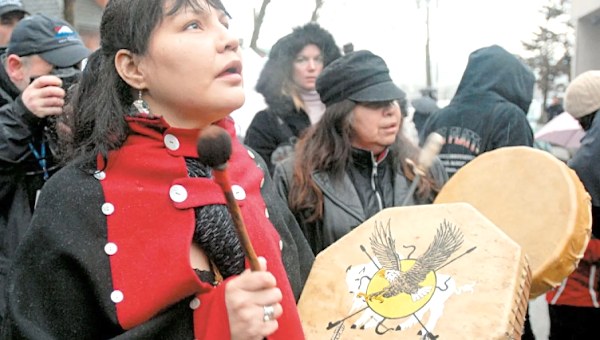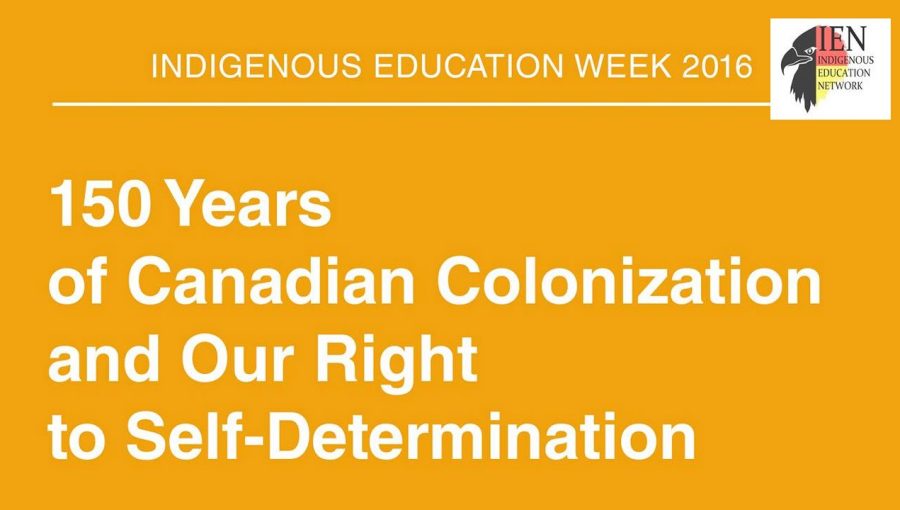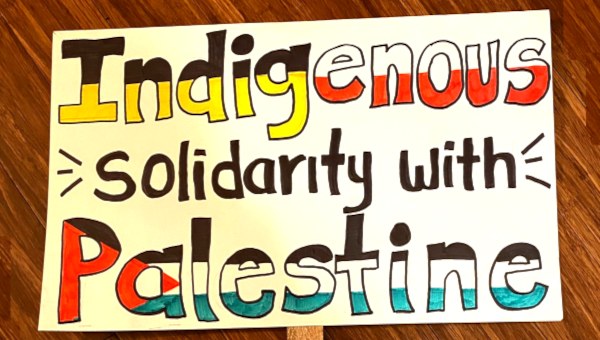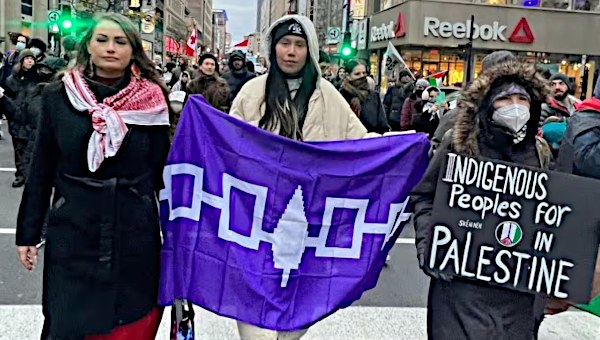Genocide and Colonialism: Challenging the Canadian State
Public opinion has been shaken by the ‘discovery’ of unmarked graves of children who died in residential schools. The word ‘discovery’ has to be placed in quotation marks because Indigenous communities have been saying for many years that terrible things happened at these places. The time has come to call this what it is – a genocide.
The Birth of European Colonialism
Following the ‘discovery’ of the Americas in 1492, a brutal process of plunder was unleashed by European powers with the goal of taking control of plethoric mineral resources, vast hunting grounds and abundant arable lands. The consequences for Indigenous communities were catastrophic. Through killing, disease and enslavement, they carried out one of the greatest genocides in world history.

On the Shores of the St. Lawrence
In the northern part of the continent, the Indigenous population was spread out across a huge territory, with many communities possessing a significant capacity for resistance, at a time when European settlements were still sparsely populated. Competition between England, France and the Netherlands obliged the French colonial power to come to terms with Indigenous Peoples, more out of necessity than virtue.1 While its aims were the same, France negotiated a number of treaties recognizing the rights of Indigenous People, both to open up western territories to trade and exploration, and to thwart English colonial ambitions.
Major Turning Point
By the second half of the 18th century, Britain was emerging as the major world power. Given the large French-origin population on the shores of the St. Lawrence, the British colonial power sought ways to subjugate but not annihilate them. They took a different approach to Indigenous Peoples. They crushed the revolt led by Odawa war chief Pontiac (Obwandiyag), traditional ally of the French, which erupted at Fort Detroit in 1763 and spread across the Great Lakes region. Following the secession of the territories that became the United States, the War of 1812 put an end to American ambitions and consolidated the hold of the British Empire.
Soon after, the defeat of the republican movement’s 1837-1838 insurrection further strengthened the colonial power. In 1841, Herman Merivale, Oxford professor and future Permanent Under-Secretary of State for the Colonies, recommended “insulation” and assimilation as a “solution” to the “Native Question.” Indigenous Peoples had to “choose” between assimilation and confinement to reserves where population movements and economic activities were strictly controlled. In 1842, the first Indigenous residential schools were established. The goal of these institutions was clear: “killing the Indian in the Child.”2
Confederation
In 1867, the British North America Act gave the federal government jurisdiction over lands reserved for Indians, and over Indians as such. In 1869, Indigenous lands were privatized and leased back to them, with a certificate of ownership (“location ticket”) issued to formalize the transaction. Indigenous women forfeited status if they married someone outside their community. This colonial arrangement was completed through the crushing of the Manitoba Métis and the execution of their leader Louis Riel in 1885, opening up western territories to large-scale settlement.
In the Shadow of the Canadian State
After the Second World War, the Canadian state proposed the elimination of Indigenous People’s distinct status, supposedly to give them the same rights as Canadians. But Indigenous Peoples rejected what they saw to be a policy of assimilation. In the 1980s, a memo drafted by a team of experts recommended a limiting of federal-government obligations, a reduction of federal spending on First Nations and a shifting of responsibilities to the provinces. Adopted in part, these measures have created the current state of affairs.
“Third Party Management of communities by remote white accounting firms paid out of meagre band budgets is used as a form of fiscal and political punishment. Traditional governance has been eroded by the continued imposition of Ottawa’s band council system. Indian political organizations and First Nations are controlled by annual funding cycles in which large amounts of money can be withheld to express political displeasure, making long term planning impossible.”3
While Canada ranked 12th internationally in 2016 according to the UN Human Development Index, the Registered Indian population would have ranked 52nd among countries with ‘very high’ human development, compared to a ranking of 63rd in 2006. The off-reserve Registered Indian population would rank 42nd in 2016 among countries with ‘high’ human development compared to 47th in 2006. The 2016 on-reserve Registered Indian population would rank 78th, while the 2006 on-reserve population would rank 89th, among those with ‘high’ human development. Destitution, unsanitary housing, lack of access to drinking water, malnutrition, and inadequate health and education services are widespread. Indigenous culture and languages have been marginalized.
The Main Stumbling Block
Since the revelations of crimes knowingly perpetrated by the Catholic Church, public awareness in Quebec and Canada has evolved. As for the federal state, though, beyond holier-than-thou rhetoric advocating “reconciliation” and increased spending, the main pillars of the system remain unchanged. No attention is paid to the fundamental issue – Indigenous sovereignty, the right to self-government, in accordance with the UN Declaration on the Rights of Indigenous Peoples. Ottawa refuses to negotiate with communities who do not want to give up title, ignoring the recommendations of the Royal Commission on Aboriginal Peoples.

One hears the word “reconciliation” everywhere these days. “Moral” responsibility for what happened is accepted, but the colonial system remains untouched. In the absence of real sovereignty, though, there cannot be substantial change. Moreover, were the rights of Indigenous Peoples to be recognized, they would constantly come into conflict with a Canadian state whose political economy is based in large measure on resource extraction, which requires territorial control. The Indigenous activist and academic Glen Coulthard has put this another way: “For our nations to live, capitalism must die.”4
So What Can Be Done?
The fundamental institutions of the Canadian state, built on a foundation of colonial plunder, cannot be reformed. You can’t fix a house whose foundation is rotten. In the short-term, though, there are emergency measures on which we must focus:
- Demand accountability from the institutions which allowed this genocide, from the Canadian state down through its consenting partners in provincial governments and the Catholic Church. The murders that took place in residential schools, the systemic violence that continues against Indigenous women, and the entrenched institutional racism as exemplified by the Joyce Echaquan case, cannot remain unpunished.
- Develop an emergency plan to bring an end to poverty and the under-development of infrastructure, which condemn Indigenous communities to live in a kind of Fourth World.
- Immediately suspend new resource-extraction projects which threaten territories with the destruction of the environment and the building of massive facilities that further disfigure the land.
- Buttress governance structures for and by Indigenous Peoples, including in the areas of security and public safety.
- Support the Indigenous renaissance, which involves breathing new life into civil-society organizations and rehabilitating Indigenous cultures and languages, under Indigenous control.
In the long-term, however, a total overhaul is required, with full recognition of the right to self-determination as its starting point.5 Such a “deconstruction” would only lay down markers for a possible “reconstruction,” probably on the basis of reinvented state entities. Of course, an epic struggle will be required to reach that point. From the point of view of Quebec’s movements for emancipation, an alliance with Indigenous Peoples is indispensable, through a process like the constituent-assembly project promoted by Québec Solidaire in recent years. We can only rebuild Turtle Island if we do so together. •
This article first published in French on the Nouveaux Cahiers du socialisme website. Translation by Nathan Rao.
Endnotes
- A century after their arrival, the French understood, under Champlain’s leadership, that they had no choice but to ally themselves with Indigenous Peoples. They nonetheless sought to dominate them by other means, such as integration into the Catholic religion.
- Corvin Russell, “Le colonialisme canadien, d’hier à aujourd’hui,” Nouveaux Cahiers du socialisme, n° 18, autumn 2017.
- Corvin Russell.
- Glen Coulthard, “For Our Nations to Live, Capitalism Must Die,” Unsettling America.
- Needless to say, the same principle also applies to the Québécois people.





